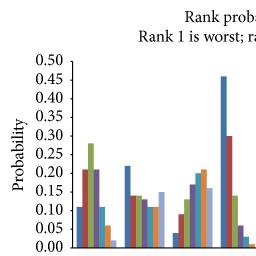Reduce High Blood Pressure with Mindfulness
By John M. de Castro, Ph.D.
“meditators showed not only a significant reduction in blood pressure, but they also had nearly 50% lower rates of heart attack, stroke and mortality compared to non-meditating controls.” – Elaine Pomfrey
High Blood Pressure (Hypertension) is an insidious disease because there are no overt symptoms. The individual feels fine. But it can be deadly as more than 360,000 American deaths, roughly 1,000 deaths each day, had high blood pressure as a primary or contributing cause. In addition, hypertension markedly increases the risk heart attack, stroke, heart failure, and kidney disease. Hypertension is present in about 70% of first heart attacks, about 80% of first strokes, and about 70% of chronic heart failures. It is also a very common disorder with about 70 million American adults (29%) having high blood pressure and only about half (52%) of people with high blood pressure have their condition under control. Additionally, nearly a third of American adults have prehypertension, with blood pressure higher than normal, but not yet considered hypertension.
High blood pressure, because it doesn’t have any primary symptoms, is usually only diagnosed by direct measurement of blood pressure usually by a health care professional. When hypertension is chronically present over three quarters of patients are treated with antihypertensive drugs. But these medications often have adverse side effects. So, patients feel lousy when taking the drugs, but fine when they’re not. So, compliance is a major issue with many patients not taking the drugs regularly or stopping entirely.
Obviously, there is a need for alternative to drug treatments for hypertension. Mindfulness practices have been shown to aid in controlling hypertension. It is not known, however, which practices work best. In today’s Research News article “The Effect of Three Different Meditation Exercises on Hypertension: A Network Meta-Analysis.” See summary below or view the full text of the study at: https://www.ncbi.nlm.nih.gov/pmc/articles/PMC5424182/, Yang and colleagues compare the effectiveness of three different mindfulness practices, Qigong, Tai Chi, and yoga, in controlling hypertension. They reviewed and summarized 19 research articles from the published literature that measured systolic and diastolic blood pressure before and after training in either Qigong, Tai Chi, or yoga.
They report that all three practices helped to relieve hypertension, significantly lowering both systolic and diastolic blood pressure in comparison to control participants. But, they also report that Qigong produced superior results, lowering blood pressure to a greater extent than either Tai Chi, or yoga. It needs to be recognized, however, that the current review did not contain any direct comparisons between the three mindfulness techniques. Rather, different studies employing different techniques were compared statistically. It will be important in the future to explore direct comparisons between techniques within the same study.
Regardless, these findings suggest that the amount of exercise is not the important component of the practices for blood pressure reduction. Yoga, arguably, contains the most exercise, Tai Chi next and Qigong last, exactly the opposite ordering to the results. These results are a bit surprising in that Qigong and Tai Chi are very similar, each involving slow mindful movements, breath control, and meditative focus. The difference is that Qigong employs fewer and simpler movements than Tai Chi. It is possible that the simplicity of Qigong is more conducive to clearing the mind and relaxing which in turn reduces blood pressure. It should be emphasized that all were effective in lowering blood pressure. It remains for future research to begin to clarify which of Qigong, Tai Chi, and yoga is best in controlling hypertension.
So, reduce high blood pressure with mindfulness.
“Researchers believe that the deep rest achieved through TM sparks biochemical changes that help the body and mind reach a more balanced state, in turn triggering the body’s own self-repair mechanism.” – Carol Sorgen
CMCS – Center for Mindfulness and Contemplative Studies
This and other Contemplative Studies posts are also available on Google+ https://plus.google.com/106784388191201299496/posts and on Twitter @MindfulResearch
Study Summary
Yang, H., Wu, X., & Wang, M. (2017). The Effect of Three Different Meditation Exercises on Hypertension: A Network Meta-Analysis. Evidence-Based Complementary and Alternative Medicine : eCAM, 2017, 9784271. http://doi.org/10.1155/2017/9784271
Abstract
We aimed to use the pairwise and network meta-analysis to estimate the effects of different meditation exercises on the control of systolic blood pressure (SBP) and diastolic blood pressure (DBP). Randomized controlled trials (RCTs) were retrieved from PubMed and Embase up to June 2016, which are published in English and reported on meditation exercise for hypertensive patients. Risks of bias assessment of the included studies were assessed by Cochrane Collaboration Recommendations and network meta-analysis was performed by ADDIS. Mean difference (MD) and its 95% confidence interval (CI) were used as the effect size. A number of 19 RCTs were included in this study. Results of pairwise comparisons indicated that meditation exercise could significantly decrease the SBP and DBP, compared with other interventions (MD = −7.10, 95% CI: −10.82 to −3.39; MD = −4.02, 95% CI: −6.12 to −1.92). With good consistence and convergence, network meta-analysis showed that there were no significant differences between meditation and other interventions on SBP. For DBP, Qigong was significantly lower than “no intervention” (MD = −11.73, 95% CI: −19.85 to −3.69). Qigong may be the optimal exercise way in lowering SBP and DBP of hypertensive patients, but a detailed long-term clinical research should be needed in the future.
